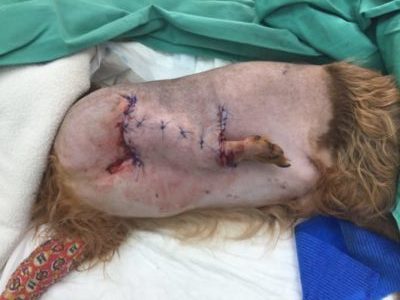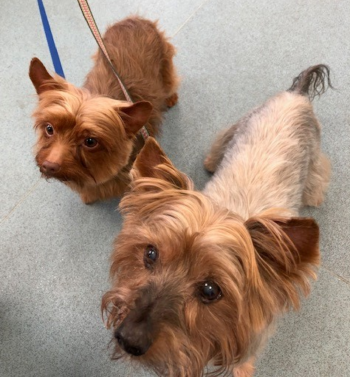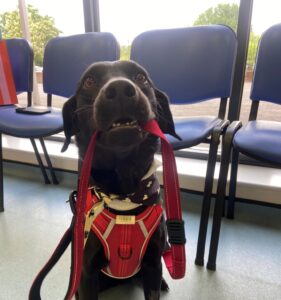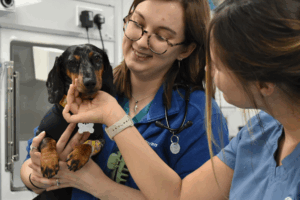Back in June 2018, our Firgrove vets were presented with an interesting emergency case. Henry, a little seven-year-old Yorkshire terrier cross had injured himself whilst out playing in the garden. He had what we call a ‘degloving’ injury which is where the skin is stripped away from an area, which in his case was on his left front leg. Unfortunately for Henry, the injury was so extensive that the wound affected the entire circumference of his leg. This meant that it would not heal, even with bandaging and wound support. Our vets were left with the decision to amputate, or try a technique called a bi-pedicle skin graft, also known as a pouch graft. His owner was very keen to try to save his leg, so we agreed we would perform the pouch graft.
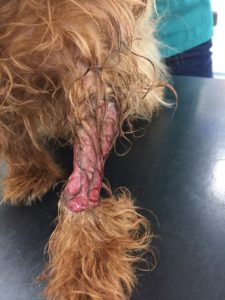
To perform a pouch graft, there are two phases. In phase one, a tunnel is made through the skin of the side of the chest. The leg is then posted through the tunnel so that the tunnel of skin covers the wound. The chest skin is then stitched over the leg so it is secure and left to heal onto the leg for two to three weeks. To do this successfully, we needed to make sure that Henry would manage on three legs comfortably and quietly enough to allow the skin to take. So, after cleaning up the leg and trimming away any dead tissue, before we started the pouch graft, he was bandaged with the leg strapped to his chest for the night to see how he would cope, which we were pleased to say he managed perfectly! The next day we went ahead with phase one of the pouch graft and his leg was stitched into the pouch which healed beautifully. Stage two of the graft involves releasing the leg from the pouch, so long as the skin from the chest has healed onto the leg sufficiently. The leg is released by cutting a rectangle of skin around the leg away leaving enough skin taken from the chest to wrap around the rest of the leg, and the resulting wound on the chest is stitched back together.
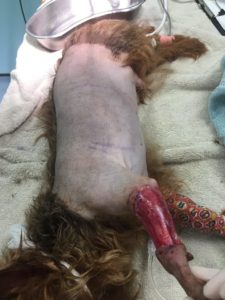
For Henry, his recovery wasn’t easy. The outer part of the graft took nicely on the leg, but the inner portion of the graft struggled with getting a good blood supply, and some dead tissue had to be trimmed away. Fortunately, most of the graft was very healthy, and a bed of tissue had formed underneath the entire graft for new skin to grow over. This meant that the recovery was slightly longer than expected, but over time, with careful dressing changes and the help of some medical grade manuka honey applied to the wound, in addition to Henry’s owner and our team’s complete dedication to saving his leg, the wound healed completely and he is now back to normal.
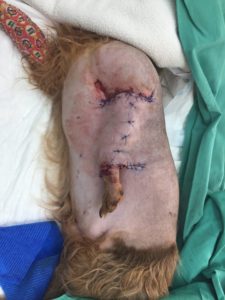
Henry was such a superstar of a patient, he coped incredibly with all the procedures to help save his leg, and we are so happy to say that he is now leading a normal life on all four legs!
